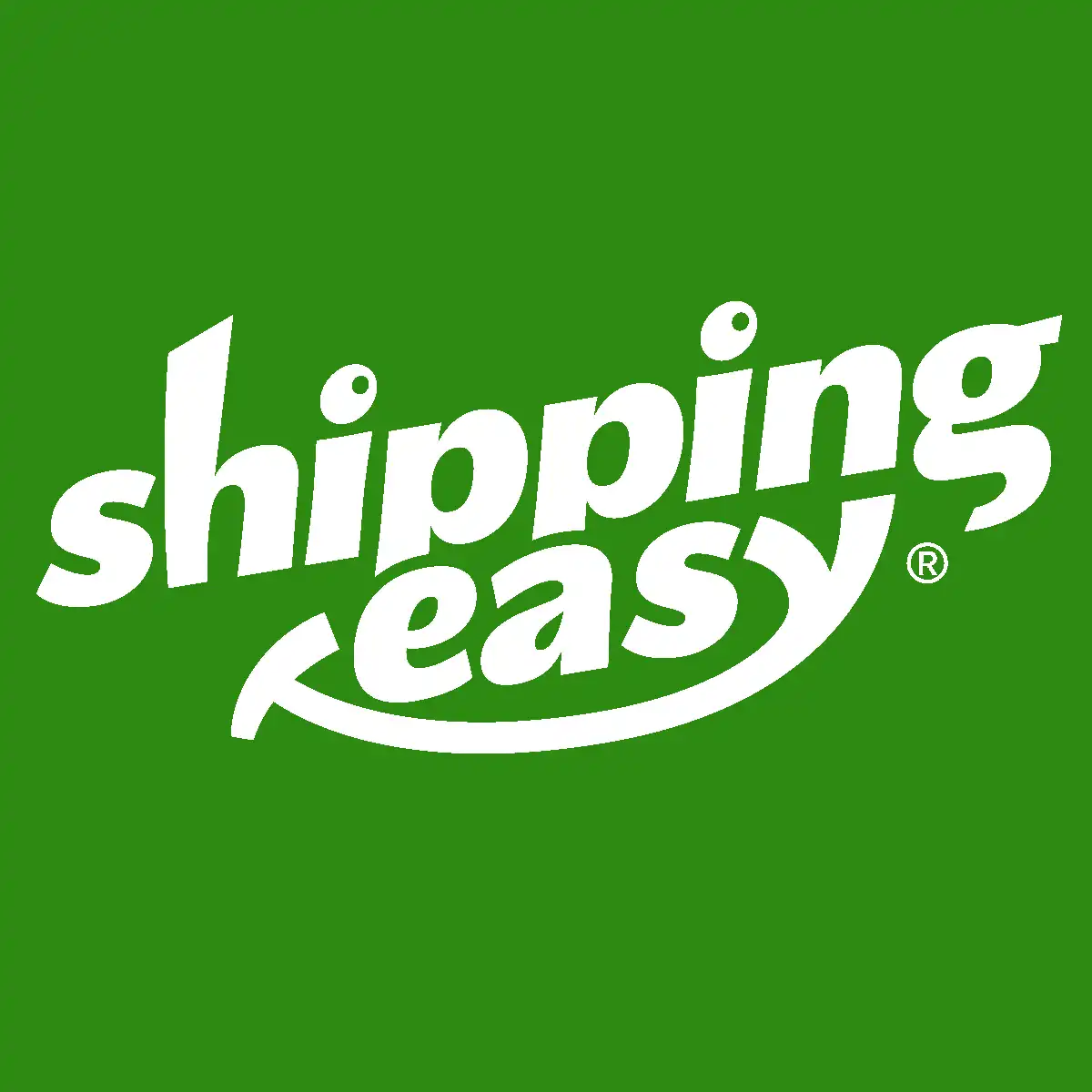In the fast-paced world of ecommerce, shipping plays a crucial role. Customers want their orders fast and businesses are striving to meet this expectation.
The challenge is delivering products quickly and accurately without sacrificing profitability. Knowing how to set up an effective shipping process is key. The right tools for the job are invaluable.
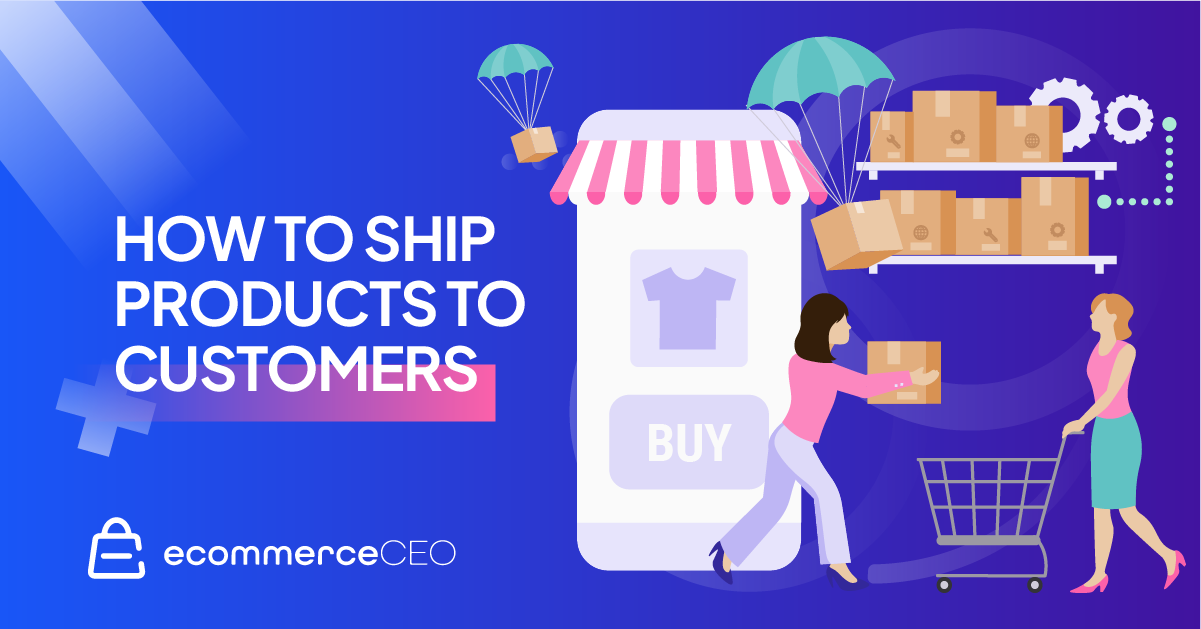
We will start by giving you an overview of the ecommerce shipping process. Then we will give you pro tips on saving money while impressing your customers. So whether you ship products from home, or use a fulfillment center, this guide is for you.
What Is Ecommerce Shipping
Ecommerce shipping refers to the process of delivering products purchased online to the buyer. Efficient ecommerce shipping requires careful consideration of factors, such as:
- carriers
- shipping rates
- delivery options
- customer expectations
Ecommerce shipping has become an integral part of online business. Customer expectations for fast and reliable delivery continue to rise.
Benefits of Streamlined Shipping
Streamlined shipping is crucial for the success of any ecommerce business. By optimizing the entire shipping process, online retailers can significantly improve customer experience, reduce shipping costs, and enhance overall operational efficiency.
With a well-organized and efficient shipping system in place, businesses can print shipping labels and track ecommerce shipments automatically; inventory management is also a breeze. This saves time and ensures that products are delivered to customers quickly and accurately.
A streamlined shipping procedure also provides great customer experiences. Customers today have high expectations when it comes to fast delivery options. By offering various ecommerce shipping methods, such as expedited and same-day delivery, businesses can meet customer expectations and provide the optimal shopping experience.
By working with a third-party logistics (3PL) provider, ecommerce businesses can access discounted shipping rates from carriers. This can improve profitability and delegate a significant portion of shipping tasks, if desired.
Ecommerce Fulfillment Methods
There are many different shipping and fulfillment methods that businesses can use to deliver products to customers. Below are some examples of popular fulfillment options and the advantages and disadvantages of each.
Self-Fulfillment
Self-fulfillment is an ecommerce shipping model where businesses handle all aspects of the fulfillment process in-house. While self-fulfillment offers businesses complete control over the delivery process, it also presents certain challenges.
One of the primary challenges of self-fulfillment is the time and upfront cost involved in setting up the necessary infrastructure. This approach entails securing your own warehouse space, purchasing equipment and supplies, arranging pickups for carrier shipping, and overseeing warehouse staff.
It requires a lot of time and money to create and scale a complete warehouse management system, but the benefits can be worth it. By handling your own fulfillment, you have greater control over the customer experience and can ensure that orders are accurately picked, packed, and shipped. Essentially, it is up to you whether your ecommerce shipping operation performs perfectly or poorly!
3PL
Outsourcing ecommerce order fulfillment to a third-party logistics provider is a popular shipping solution for many businesses. With a 3PL service, businesses can free up valuable time and resources by entrusting their order fulfillment to experts in the field.
Scalability is a major advantage of choosing a 3PL. As businesses grow, their order volume may fluctuate. With a 3PL, businesses can easily scale their shipping operations up or down, depending on their needs. This flexibility allows businesses to only pay for what they need.
One of the main concerns of using a 3PL is a loss of control over your fulfillment process. Businesses may have less visibility and direct control over their orders, leading to potential miscommunication or errors. Essentially, you are trusting a crucial component of your ecommerce business to someone else, which can be scary.
Dropshipping
Dropshipping is a popular fulfillment method for ecommerce shops when available. The process of dropshipping is straightforward: When a customer makes a purchase on an ecommerce website, the order is forwarded to the dropshipping supplier who then packages and ships the product directly to the customer.
One of the major benefits of dropshipping is its low-cost operation. Since businesses don’t need to invest in inventory or their own warehouses, upfront costs are reduced significantly. This makes dropshipping an ideal option for businesses with limited capital.
Dropshipping also allows for flexibility in product offerings. Businesses can quickly adjust their catalog without large inventory investments.
With dropshipping, companies can focus on driving sales and growing their customer base instead of logistics.
However, many products and suppliers are not available for dropshipping. This can significantly limit an ecommerce company’s product offerings. Dropshipping is also usually less profitable than ordering in bulk.
Hybrid
Choosing the right fulfillment method depends on the specific shipping needs of your business and available resources. It isn’t an all-or-nothing decision, but more of a scale where you decide how much of your process to delegate.
Some ecommerce companies will handle the entire process on their own. Others will delegate as much as possible to a 3PL in order to focus their resources on other facets of the business. Everything in between can be considered hybrid shipping.
It is also not uncommon for companies to have different processes for different products. For example, dropshipping products from some suppliers, storing small items internally, and using a fulfillment warehouse for large items.
Combining different shipping fulfillment methods for the best results is a common strategy. While utilizing a singular method is often simpler from an operations standpoint, it is rarely the most efficient strategy.
Choosing the Right Shipping Carriers, Methods, and Services
Choosing the right ecommerce shipping companies, method, and add-on services can help you ensure a positive customer experience. Popular carriers include:
- USPS
- UPS
- FedEx
- DHL
Each shipping carrier has its own strengths and weaknesses. For instance, USPS is often more cost-effective for small and lightweight items. However, FedEx and UPS are usually better for large packages and freight shipping. Understanding the strengths of each carrier can help you decide which one best fits your business needs.
In addition to selecting the right carrier, choosing the most suitable shipping method is essential. Balancing cost and speed while matching customer expectations is the key to success.
Flat-rate shipping for ecommerce can be a convenient option for businesses that have standardized product sizes. It allows for easier cost calculations, but won’t always reflect the actual shipping cost.
To streamline your fulfillment process, integrating shipping tools with your ecommerce platform is a game changer. Automating your fulfillment process will save you untold time as your business grows.
Set Up Shipping from Your Ecommerce Platform
Setting up a good shipping procedure in your ecommerce platform is crucial for smooth operation. By integrating logistics software directly, you can automate many aspects of shipping, such as:
- Importing customer addresses
- comparing shipping rates
- selecting carriers
- choosing shipping methods
Offering different options, like standard or expedited delivery, leads to more happy customers. Logistics software also allows for easy shipment tracking.
Not all businesses necessarily need dedicated shipping software, but you do need something that will handle printing your labels and communicating with shipping carriers. But by taking advantage of the features and integrations available with your ecommerce platform, you can establish a cost-effective shipping strategy that benefits you and your customers.
Print Labels
With your shipping software and ecommerce platform integrated, printing labels is a breeze. When a customer places an order, they input their shipping information, which is imported automatically.
From there, you can set up processes for what to do with that data. Some software includes automatic address verification to prevent errors.
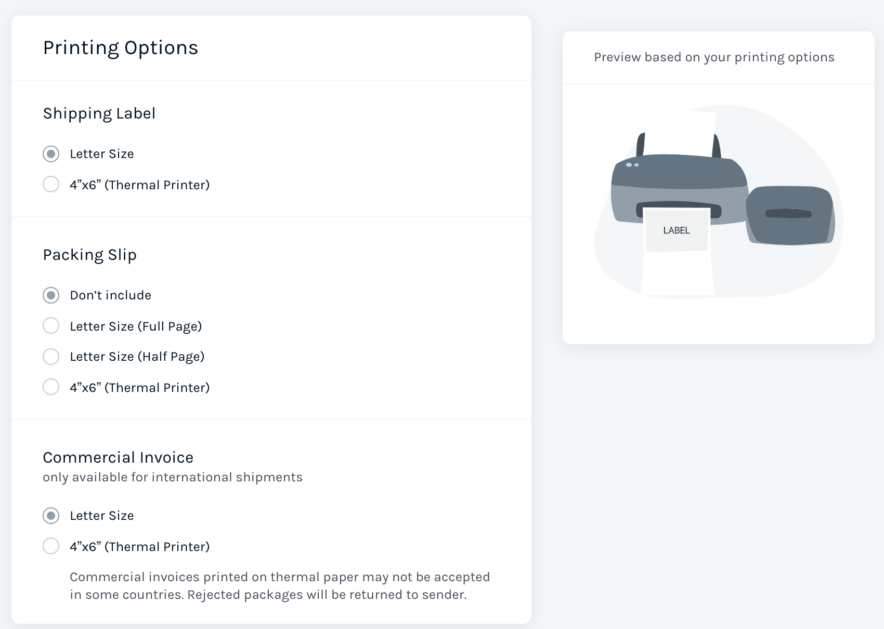
That information is printed on a label either automatically or by part of your shipping team. This label contains important information that can help with fulfillment and guarantees a smooth delivery from the carrier.
Shipping labels include key details, such as:
- the return address
- destination address
- package weight
- shipping class
- tracking number
These details enable shipping carriers and fulfillment workers to promptly identify and process the package for delivery.

Without accurate labels, packages may get lost, delayed, or mis-shipped. Automating ecommerce shipping processes can prevent many errors, or at least shifts the responsibility to the customer.
Ecommerce Platforms
Since shipping is such a crucial aspect of ecommerce, all major platforms offer features to improve the process. Some popular platforms include:
When choosing an ecommerce platform for your shipping operation, consider the features and benefits of each platform. No matter which option you choose, these platforms can significantly improve your shipping procedures.
Shopify
Shopify shipping options help streamline and simplify fulfillment. You can integrate with popular shipping carriers, select the best ecommerce shipping option, and generate labels.
The platform provides real-time shipping calculations to your customers at checkout. There are also order tracking capabilities. If you use Shopify for your ecommerce store but want to use a different shipping tool, you can do that too.
BigCommerce
BigCommerce offers a variety of features and tools from a convenient dashboard. Carrier integration, shipping calculations, and label printing can all be managed with a few clicks.
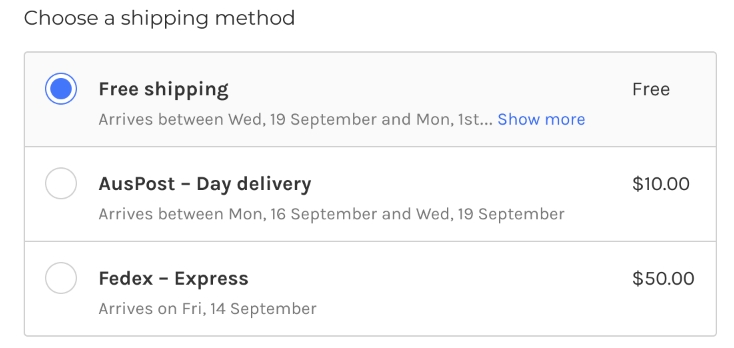
BigCommerce offers built-in automation, enabling you to set up custom shipping rules. Based on factors like order value and customer location, you can apply flat-rate or free delivery.
Wix
Wix is a popular website builder that includes some ecommerce shipping tools. Integrating your site with USPS, UPS, and FedEx is simple. This allows you to calculate real-time shipping prices, print your labels, and track packages all from one place.
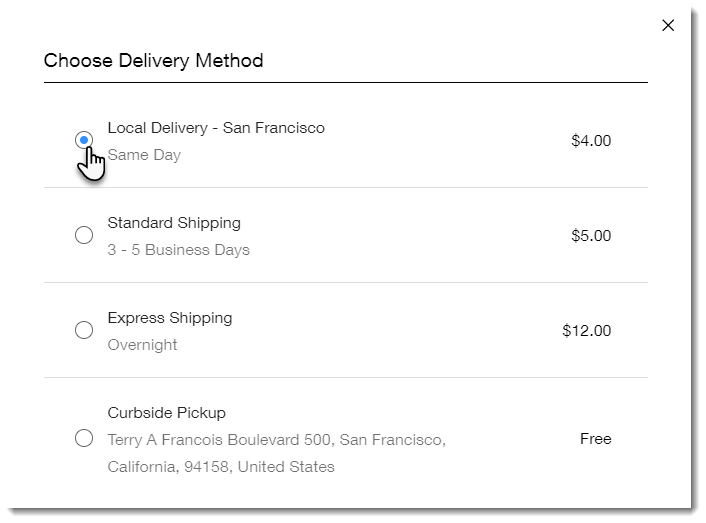
With Wix, you can even set specific shipping zones, rates, and delivery methods based on customer information. Overall, Wix is one of the easiest solutions for small businesses looking to launch an ecommerce site with simple order management.
WooCommerce
WooCommerce is one of the most popular plugins for WordPress sites and comes with all the features you would expect. Carrier integration, label printing, and tracking are all standard.

If you are looking for effective ecommerce shipping solutions for your WordPress store, WooCommerce is an obvious choice.
Scaling with Shipping Software
Shipping software is invaluable for ecommerce companies looking to scale their operation. Businesses can automate various aspects shipping, such as:
- label generation
- order insurance and tracking
- carrier selection
This eliminates the need for manual data entry and reduces the chances of errors. By streamlining these tasks, you can spend more time on other aspects of your operation.
Shipping software often provides the best rates, helping businesses save money on shipping. These options will integrate with global carriers such as:
- Canada Post
- Royal Mail
- Australia Post
Here are some of the best shipping tools on the market:
|
4.5
|
4.1
|
4.3
|
ShippingEasy
With ShippingEasy, businesses can easily manage online orders from multiple sales channels. You can automate shipping label generation and enjoy discounted shipping prices. Real-time tracking and delivery notifications are another perk for customers.
Easyship
With Easyship, businesses can easily compare shipping costs from different couriers. The platform offers standard features like label generation and tracking updates. It also includes customs documentation for international shipping requirements.
ShipStation
With ShipStation, businesses can easily import, manage, and ship orders from various sales channels all in one place. Expect fewer errors and discounted shipping expenses with ShipStation.
ShipEngine
ShipEngine is a powerful platform that provides seamless ecommerce shipping integrations and automation. Sellers can compare shipping prices, print labels, track packages, and even manage returns. It also integrates with various marketplaces, simplifying fulfillment from all of your storefronts.
Estimate Your Shipping Cost
Don’t underestimate the value of being able to predict accurate shipping costs. This not only benefits you from a financial standpoint, but provides a better customer experience as well.
Estimating shipping costs allows you to budget accurately. By knowing how much it will cost to ship each item, you can factor in these expenses when planning your business model.
It also ensures you aren’t overcharging your customers. This can lead to customer dissatisfaction and cart abandonment during the checkout process.
On the other hand, undercharging for shipping can eat into your profit margins. By accurately estimating shipping costs, everybody wins.
Flat Rate Shipping
The primary advantage of flat rate shipping is its simplicity. Regardless of the items purchased, order size, or destination, the shipping and handling fee is always the same. This makes it easy for both the business owner and the customer to understand and predict the total cost.
Another advantage is that it encourages customers to place larger orders. Since the shipping cost remains the same regardless of the number of items in their cart, customers get a better deal by buying more at once. This can help increase average order value.
The downside is that it may dissuade some potential customers from placing small orders. For single, small, or lightweight items, the flat rate price may be more than the actual cost to ship. This is necessary to maintain an average that doesn’t harm your bottom line, but may dissuade some shoppers.
Real-time Carrier Rates
If you want accurate shipping costs for every order, you need real-time carrier rates. With this option, shipping costs are calculated based on package weight, dimensions, and destination to match what the carrier will actually charge.
This ensures you are charging the exact amount for shipping, which can help increase customer trust and satisfaction. It can even help reduce cart abandonment, as customers are less likely to bounce at an unexpectedly high delivery fee.
The disadvantage is that real-time shipping rates usually require integration. This will require certain software and the technical expertise to set it up.
Standard Shipping Services
Standard shipping is often more affordable than expedited or overnight shipping. This allows businesses to offer more budget-friendly shipping, attracting price-conscious customers.
However, standard shipping typically takes longer and can have broad delivery windows.
This can lead to unhappy customers, especially for those who want their products fast.
In some cases, standard shipping may not include real-time tracking updates. This lack of visibility can cause anxiety and frustration for customers who want to know the progress of their shipment.
Expedited Shipping Services
Expedited shipping offers faster delivery speeds. With expedited shipping, packages can arrive at their destination in a shorter time frame, sometimes in under two business days. This is ideal for customers who value fast shipping.
Even for customers who want the cheapest shipping option, you can exceed expectations by delivering ecommerce shipping orders fast. This can increase customer loyalty and even reduce cart abandonment with fast delivery estimates.
The main drawback, of course, is the price. Expedited shipping usually comes with premium rates, which need to be covered by the business owner and/or customer. It’s also worth noting that expedited shipping options may have limitations by location.
Factors Influencing Shipping Rates
The primary factors that affect shipping expenses are:
- Shipping method (shipping speed)
- Distance and destination
- Package size
- Package weight
- Special requirements (refrigerated items, biohazard, etc.)
- Add-ons like insurance, signature required, etc.
- The carrier
In general, shipping becomes more expensive for faster delivery, to farther locations, with bigger packages, and special requirements or add-ons. Sometimes, distance on a map is less important than distance from transit centers or the number of borders being crossed.
How to Offer Free Shipping without Affecting Profit Margins?
Free shipping can be a powerful tactic for attracting customers and increasing conversion rates. However, it’s important to carefully consider the pros and cons of this approach.
Benefits of Free Shipping
Everyone loves free stuff; even if that free stuff is shipping. Free shipping is an easy way to increase sales, when done right. It not only boosts conversion rates and improves the customer experience, but reduces cart abandonment.
It can also be used for special offers like a minimum order threshold. For example, offering free delivery on orders over $75 will motivate many customers to increase their order size. The customer will feel like they are getting a better deal, and your revenue increases: it’s a win-win.
Cons of Free Shipping
The downside of free shipping is the shipping costs have to come from somewhere. If you aren’t charging the customer, it is coming straight out of your profits.
Some companies will balance this by increasing product markup or setting a minimum order amount for free delivery. Others will simply eat the cost as a worthwhile investment in customer satisfaction.
Methods of Offering Free Shipping without Losing Money
Here are the best practices for offering free shipping sustainably:
Minimum Purchase Threshold
Set a minimum order value that customers need to reach to qualify for free shipping. This encourages customers to spend more and offset the cost of shipping.
Increasing Product Prices
Adjusting product prices slightly to cover the cost of shipping can help maintain profit margins while still offering free delivery.
Partnering with Shipping Carriers
Negotiating discounted shipping with carriers can help reduce costs and make offering free shipping more sustainable.
Shipping Club Subscriptions
Some companies offer paid memberships that include free delivery, often among other benefits. This tactic increases revenue and encourages fervent customers to make more purchases.
In-store Pickup
Offering free in-store pickup to local customers, or free shipping to their local store, is another common tactic. It gets customers into your store and usually costs no more than adding an item to an existing stock shipment.
With the right methods, your ecommerce businesses can benefit from free shipping without sacrificing profits.
Decide Your Packaging
For many businesses, packaging is only an afterthought. Companies that take advantage of this opportunity can create a significantly better customer experience.
To find the best packaging options, consider the following steps:
Assess your product
Consider the size, shape, and fragility of your items. Breakable products may require additional padding or protective materials.
Research packaging materials
Look for materials that are sturdy and provide adequate protection for your products. Consider options like cardboard boxes, bubble wrap, foam inserts, or void fill.
Consider sustainability
In today’s eco-conscious world, it’s important to prioritize sustainable packaging options. Many customers will appreciate it if your packing materials are recyclable, biodegradable, or made from recycled stuff.
Optimize package size and weight
Oversized and heavy packages can lead to higher delivery costs. Minimizing package weight and size can reduce shipping expenses, but never sacrifice protection.
Test and evaluate
Before implementing a packaging method on a larger scale, conduct thorough testing to ensure it serves its purpose. Replacing items damaged during delivery is almost never worth skimping on packaging.
Packaging and marketing
Many successful companies take advantage of packaging as a marketing and customer experience tool. Tactics as simple as Amazon’s smile logo on the box or including surprise hard candy can elevate the customer experience. Including catalogs or coupons is another smart strategy.
Remember, the right packaging method not only protects your products but also enhances the customer experience. A bad delivery experience will absolutely reflect poorly on your company. On the other hand, a professional and aesthetically pleasing unboxing can leave an amazing impression! For ecommerce, unboxing is the closest you get to a direct connection with your customers.
Finalize Your Returns Policy
An effective shipping policy is an essential aspect of any successful ecommerce business. It provides transparency and peace of mind to customers and protects you from unexpected expenses.
Here’s why a solid returns policy is crucial for your ecommerce business:
Building trust
A clear and customer-friendly return policy establishes trust and credibility with your target audience. New customers especially will feel more confident in making a purchase from a company with a fair returns policy.
Enhancing customer experience
A seamless and hassle-free return process can transform a customer satisfaction disaster into a positive experience.
Encouraging sales
A well-implemented return policy can have a positive impact on sales. Customers are more likely to make a purchase if they aren’t nervous about a bad result. This is a core pillar of many ecommerce giants like Amazon and even eBay.
Gaining a competitive edge
In the saturated world of ecommerce, a well-crafted returns policy can differentiate your business from competitors. By offering a more convenient and customer-centric returns experience, you can attract and retain more customers.
A customer-centric returns policy has proven benefits, but make sure you aren’t paying too heavy of a price for it. Scammers and shady customers may take advantage of a policy that is too generous, which can end up costing you time and money.
Check out this legit shipping policy template.
Understanding Customer Expectations and Satisfaction
Building a loyal customer base is crucial to success for any ecommerce company. Balancing this priority with profitability isn’t always easy, but here’s why it is so important:
Repeat business
Satisfied customers are likely to shop with you again. By meeting and exceeding their expectations, you can cultivate loyalty and encourage them to come back in the future.
Positive reviews and word-of-mouth
Happy customers are more inclined to share their positive experiences with others. This can lead to valuable word-of-mouth recommendations and online reviews, which can attract new customers.
Differentiation from competitors
In the highly competitive ecommerce landscape, providing exceptional customer satisfaction can set you apart from your competitors. This is vital for building a strong brand reputation.
Decreased customer churn
Dissatisfied customers may look for alternative options for future purchases. By prioritizing customer satisfaction, you can reduce customer churn and improve customer retention rates.
Increased revenue and profitability
Many shoppers will spend more on dependable, high-quality service. By understanding their expectations and catering to their needs, you can increase sales, average order value, and even your prices.
The customer is always right is a great idea until it starts costing you money. Doing what you can to provide top-quality service, without letting bad customers take advantage of you, is important for a profitable ecommerce business.
Ready to Streamline Your Shipping Process?
To summarize everything we covered in this article, here is a checklist you can use for planning and refining your ecommerce shipping strategy:
- Plan your strategy. First, you will need to determine which fulfillment methods and features are best suited for your business.
- Choose your options. Next, determine which carriers, ecommerce shipping options, and add-ons you want to offer your customers.
- Explore your ecommerce platform. Learning about all the shipping features on your ecommerce platform will increase your capabilities or help you decide if you might be better off switching.
- Select your ecommerce shipping software. Based on the carriers you want to use, available platform integrations, and features you need, you can pick the best software for your business.
- Research packaging materials. Minimize packaging costs by using appropriate packing materials and optimizing parcel size and weight. Ensure your packaging solutions always get your items to customers intact.
- Implement a robust return policy. Make it easy for customers to return products with transparent policies. Just be sure to protect yourself from scammers!
- Keep improving. As your company grows, your shipping strategy will need to evolve with it. Always be on the lookout for new ways to improve your procedures to provide the best shipping service and most cost-effective methods.
By focusing on these key areas, you can streamline your ecommerce shipping procedure and exceed customer expectations. This will ultimately drive greater success for your online store.
